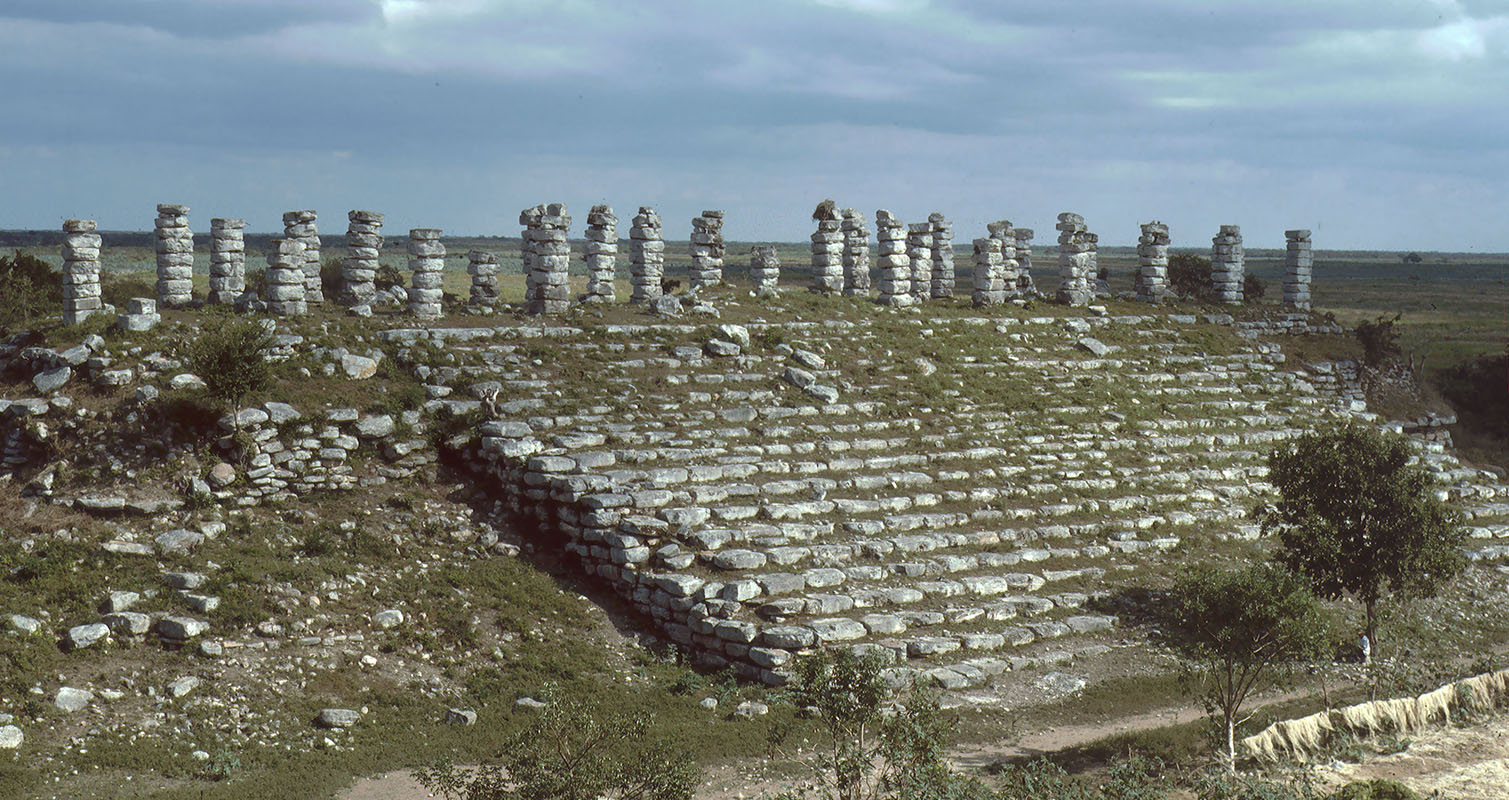Ake: Two Ruins for the Price of One

What’s really interesting about the ruins at Ake, which are missing from similar archeological sites, is that the ancient Mayan city is not the only ruins here, there are also other, more recent, Spanish colonial ruins. And the clash of both is what gives the visitor the unique opportunity to experience centuries of Mexican history in a single visit.
Ake’s Mayan Side
Ake’s Mayan ruins date back to 350 BC. They used to be a walled city, as two concentric walls mark the limits between the ceremonial and residential areas.
But, the most important structure in Ake is the one known as Structure 1; or, less academically, De Las Pilastras. Unusual among Mayan buildings, this was probably the first one to feature columns, which, it is believed, held one of the tallest ceilings at the time. And we’re not talking about one or two columns, either: 33 in all, which you reach by climbing 33 steps of stairs.
There’s also a grand plaza and, even more impressive, roads! Several miles long, too. One of these, called sacbes, made it all the way to Izamal, 20 miles away.
The Other Ake
Now, this is what makes Ake so special: the other ruins you’ll find here are of a henequen hacienda built in the late 16th century. Even more impressive, not only is it still in working order—it is still working!
Ake’s factory is not the only slice of history visitors can see. They can also experience the original owner’s daily life in the hacienda´s living quarters. Both cultures and histories really collide in the church, built on top of a previous Mayan structure, and part of the original Ake ruins.
Two tours for the price of one
Both sites at Ake feature guided tours, but you should know the hacienda’s are Spanish-only.
Oh, and another thing: Ake’s ruins are not in the middle of a busy city, but in a small town, so getting here via public transportation might be difficult. Also, you probably won’t find much else to do once your visit is done.
